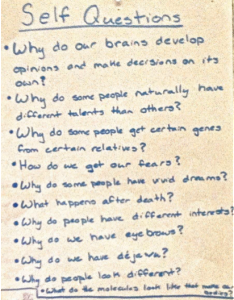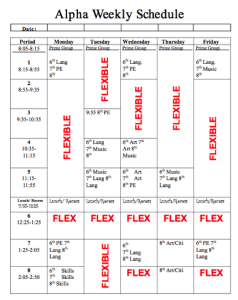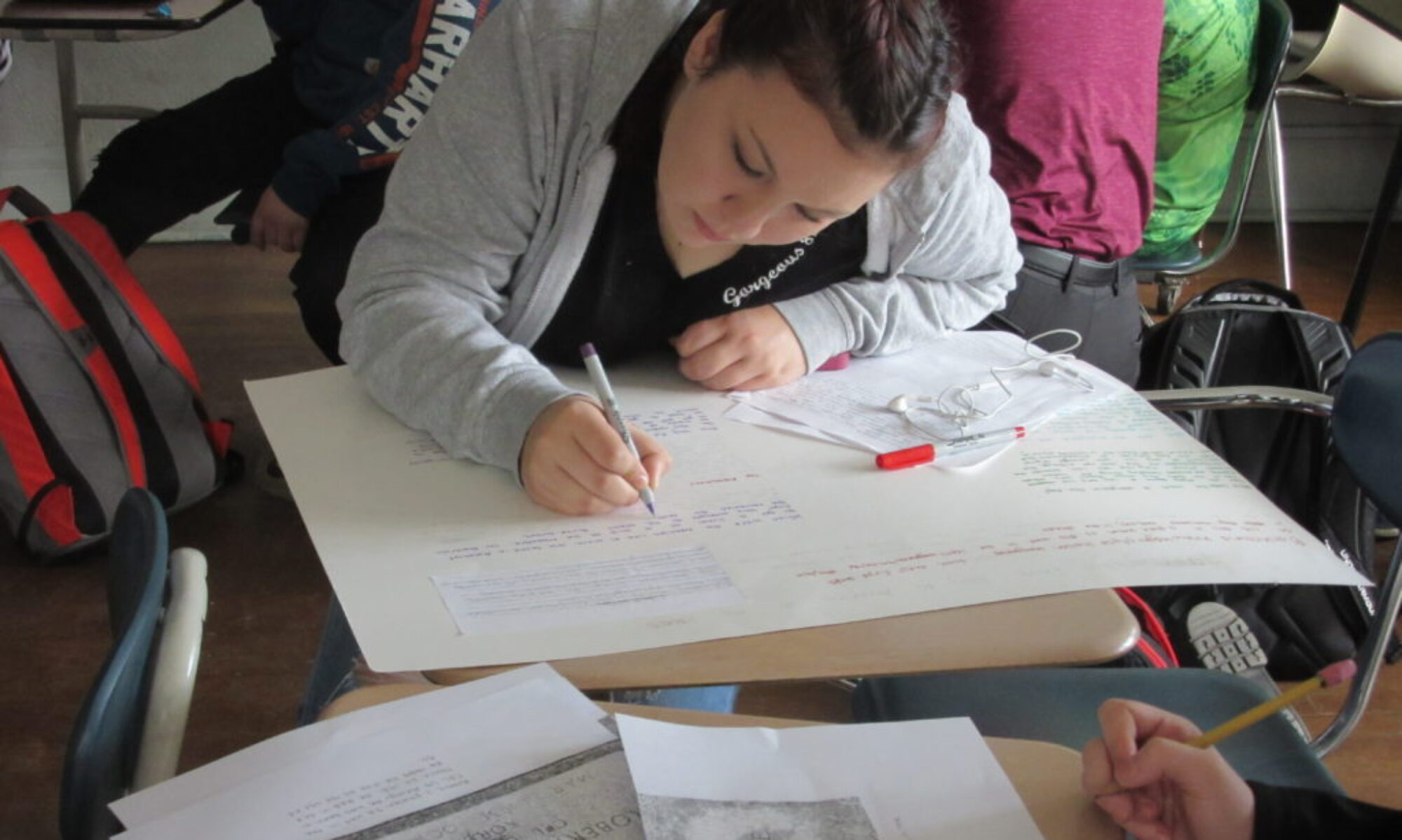Shouldn’t every hour be a genius hour?
 Anyone paying attention to education in the US lately has seen the proliferation of the “Genius Hour.” Presumably inspired by Google’s 20% rule, through which employees of the search engine giant spend a day a week on projects of their own choosing, many schools are adopting a model described by best selling author Daniel Pink as “60 minutes to work on new ideas or master new skills.” By setting aside an hour of instructional time, schools enable students to connect, construct or create, without the constraints or distractions of business-as-usual. What could be better than that?
Anyone paying attention to education in the US lately has seen the proliferation of the “Genius Hour.” Presumably inspired by Google’s 20% rule, through which employees of the search engine giant spend a day a week on projects of their own choosing, many schools are adopting a model described by best selling author Daniel Pink as “60 minutes to work on new ideas or master new skills.” By setting aside an hour of instructional time, schools enable students to connect, construct or create, without the constraints or distractions of business-as-usual. What could be better than that?
Genius Hour holds great promise at face value. It’s intended to provide students with a chance to pursue their own questions, delving deeply into their interests and concerns in a self-directed manner. Blogger A. J. Juliani shares the successful outcomes in his classroom, “I’ve never received a better response from my students than when we did 20% time. Our class came together and learned everyone’s true interests and passions. We got over the fear of failing together. We cheered for each other during presentations, and picked each other up when things didn’t go as planned. We had conversations about standards, skills and learning goals.”
I’m always heartened to read about deep student engagement, but the ramping up in our nation’s schools of Genius Hour has really thrown me. Have we come to expect so little from schools (and so much from this era of testing) that we now celebrate relegating student self-direction, dialogue about learning, and community building to a mere 60 minutes?
The danger of Genius Hour–just like Women’s History Month, Black History Month and all of those special months–is that it encourages people to think the problem has been solved. For 60 minutes, students are engaged, they have choice, and they are following their passion. Yet, just as Black History Month relieves schools during the other months from seriously considering how an entire group of people was summarily excluded from America’s history books, so too can Genius Hour free schools up to devote the many other hours of the day to the kind of rote learning and test-taking we know to be both ineffective and disengaging.
We are fortunate that in Vermont we have long-standing examples of rich, student-centered learning that meet the Bernstein’s widely accepted description of Genius Hour: “Instead of giving students assignments with predetermined topics and step-by-step instructions, teachers set aside a designated amount of time during the week for students to engage in self-directed projects that allow them to pursue their own questions, interests, and passions.”
Check out this Vermont middle grades team that has long demonstrated that learning can- and should- be based on student interests and extend well beyond an hour.
 Students on the Alpha Team at Shelburne Community School spend time brainstorming questions about themselves and the world around them. Here is an example of some of the rich and compelling questions learners pose, when given the chance. Their work reminds us that students truly do wonder about the world around them, and that those wonderings are rich fodder for curriculum.
Students on the Alpha Team at Shelburne Community School spend time brainstorming questions about themselves and the world around them. Here is an example of some of the rich and compelling questions learners pose, when given the chance. Their work reminds us that students truly do wonder about the world around them, and that those wonderings are rich fodder for curriculum.
 The Alpha Team uses Flex Time as a way to enable the ongoing pursuit of students’ questions. This sample of Alpha’s daily schedule illustrates how they integrate what many articulate as the goals of Genius Hour into everyday learning.
The Alpha Team uses Flex Time as a way to enable the ongoing pursuit of students’ questions. This sample of Alpha’s daily schedule illustrates how they integrate what many articulate as the goals of Genius Hour into everyday learning.
To paraphrase Ed Brazee, long time middle grades educator and researcher, the problem with school is that we expect students to answer questions they have not asked. The best outcomes of Genius Hour will appear when teachers recognize the power of student-directed learning as an essential component of the larger curriculum, and when teachers create consistent and prolonged opportunities for students to have a say in what and how they learn.


The Problem with Genius Hour http://t.co/l1I17rfcNd
Worth the read. “@innovativeEd: The Problem with Genius Hour http://t.co/sR2Affoayt” #kinderchat #1stchat #4thchat #edchat #tlchat
Thank you – Thank you – Thank you for your advocacy to MORE than an hour of authentic student directed inquiry in our education system. In a recent conversation with a student about an exciting maker ed project he was working on, I asked “Hows the project coming along?” His answer was “its coming along… I only get to work on it 15 minutes a day”. In reality the student gets 30 minutes a day, but by the time the project is taken out of its storage space and the student finds his space, there is not much time before “the bell rings” ending the “genius hour time”. Hard to get into a state of “flow” with this configuration. Another school I visited was working on an amazing project that had amazing service learning impact beyond the classroom, yet they got to work on this during their once a week advisory time for 45 minutes. If it was truly 20% time, blocked off (a day a week) – perhaps this type of learning could have a chance to make an impact on learning . And yes, I agree with you that the implementation of a “Genius Hour” should only be looked at the first step that helps you get started and better understand the power of student directed learning and how to start implementing more of it so that it becomes “Every Hour” of learning. Nice article
Thank you, Lucie, for your comment and for the specific examples of how limiting this practice can be. And I really appreciate your connection to flow. What a great point.
http://t.co/Mc0pxkNjHO #vted #edtech
CSSU Shelburne Alpha team featured in this post about #geniushour http://t.co/lYkG0TlkgG via @innovativeEd #vted
Don’t agree with everything here, but do agree it’s not a magic bullet @innovativeed The Problem with #GeniusHour http://t.co/hkgiON2XgY
That Alpha team you write about at that one school in Vermont has a stellar schedule. How many other schools have that luxury / freedom?
I’ve written in response to other blogs such as yours before in this post: http://geniushour.blogspot.com/2013/09/genius-hour-has-gotten-lot-of-attention.html
and then again in this one: http://geniushour.blogspot.com/2014/06/rules.html … showing how times such as “Genius Hour” helps make the rest of the week very different from “the kind of rote learning and test-taking we know to be both ineffective and disengaging.” Seeing the way students act during this hour helps more teachers to see just how “ineffective and disengaging” the rest of the week could be.
It may begin as “just 60 minutes.”
(It has to begin somewhere.)
It continues into the rest of the week.
It then spreads throughout the school.
Next, the district gets on board.
It’s what we’re doing when we’re restrained to a schedule – for now…
Posts today via @pennybishop & @ajjuliani RE: #geniushour-type TIME. http://t.co/G6NcaPqV23 & http://t.co/fU4c7FF4pU Keep the convo going!
@gallit_z @hughtheteacher @mrsdkrebs @dubioseducator @khurdhorst @schink10 2 posts for you: http://t.co/G6NcaPqV23 & http://t.co/fU4c7FF4pU
RT @JoyKirr: @gallit_z @hughtheteacher @mrsdkrebs @dubioseducator @khurdhorst @schink10 2 posts for you: http://t.co/G6NcaPqV23 & http://t.…
RT @JoyKirr: Posts today via @pennybishop & @ajjuliani RE: #geniushour-type TIME. http://t.co/G6NcaPqV23 & http://t.co/fU4c7FF4pU Keep the …
RT @JoyKirr: @gallit_z @hughtheteacher @mrsdkrebs @dubioseducator @khurdhorst @schink10 2 posts for you: http://t.co/G6NcaPqV23 & http://t.…
Great debate in the comments over The Problem With Genius Hour. http://t.co/1zVdZwIJvU @innovativeEd #vted
Agreed! I have observed the Alpha flex time and it was because there were clearly articulated proficiencies and expectations, that students were able to have have a personalized experience and be highly successful all the time. There’s no one hour substitution for that.
RT @jdownes_tiie: Great debate in the comments over The Problem With Genius Hour. http://t.co/1zVdZwIJvU @innovativeEd #vted
Shouldn’t every hour be #GeniusHour via @pennybishop http://t.co/UpPUt6z5BN #edchat #ukedchat
RT @innovativeEd: The Problem with Genius Hour http://t.co/l1I17rfcNd
The Problem with Genius Hour http://t.co/VuDwG3iM5V via @innovativeEd